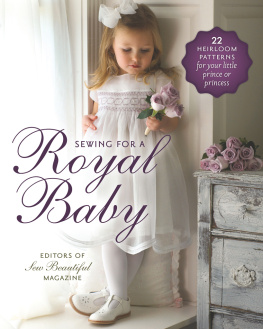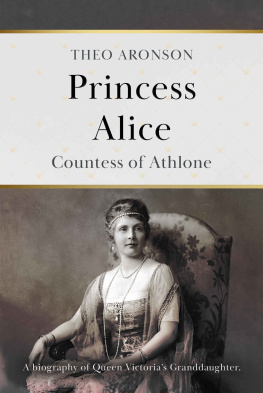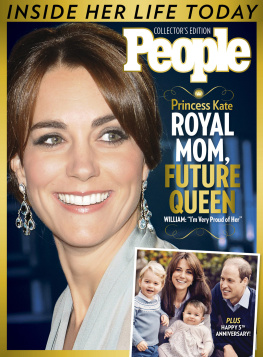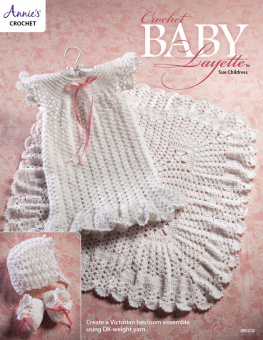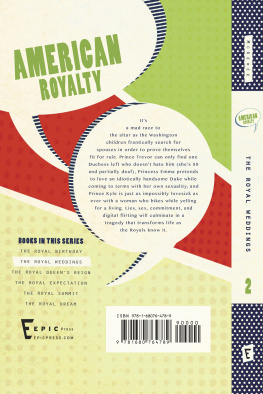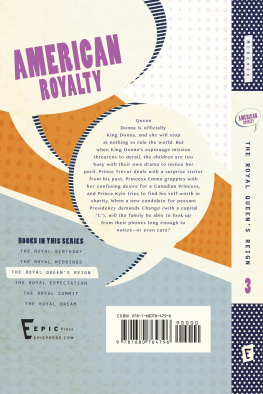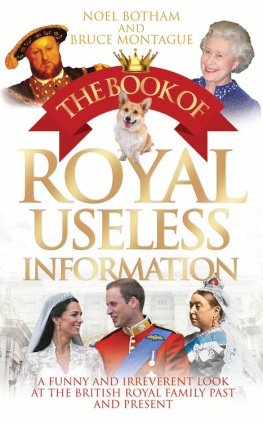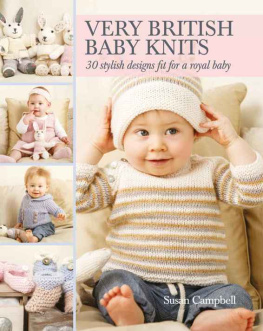Sewing for a
Royal baby
22 HEIRLOOM PATTERNS
for your little prince or princess
EDITORS OF
Sew Beautiful
MAGAZINE

Dedication
This book is dedicated to Martha Campbell Pullen for the love and support she has given to everyone in her extended sewing family, and for sharing her beliefs, her business and her passion for heirloom sewing with the world.
L IKE THE REST OF THE WORLD, we at Sew Beautiful are delighted whenever we hear news that a new little prince or princess will be welcomed into Englands Royal Family. Of course our thoughts go immediately to the most famous royal christening gown, which was originally commissioned in 1841 by Queen Victoria for her first child. The gown of Spitalfield silk satin and Honiton lace was worn by centuries of royal babies including Prince Charles and Prince William. No longer in wearable condition, it was retired by Queen Elizabeth who commissioned a replica of the gown to be worn for the 2008 christening of her grandson Viscount Sever. Will new royals continue to be baptized in this royal christening robe, carrying the tradition into the next century? Or will something new be designed for the heir to the Throne of England?
After looking at various historical photos of the family gown, we simply couldnt resist coming up with our own version. After all, remaking vintage baby clothing is our specialty. One photo led to anotherlittle Prince William in his smocked suits, Princess Margaret in an adorable organdy dressand it reminded us that the world is forever fascinated by what the royal family wears. Kate Middletons Alexander McQueen (by Sarah Burton) wedding gown set the standard for the entire bridal industry; why shouldnt our little ones have a standard of their own? In this book, we present Sew Beautifuls vision of what finery for babies and toddlers should be. Some pieces have been inspired by actual royal childrens attire, some we first saw at the Victoria & Albert Museum of Childhood in the Bethnal Green area of London, some are remakes of antiques purchased along Portobello Road and yet others are favorites we pulled from previous issues of Sew Beautiful magazine. Patterns for every look in this book can be downloaded . As with any Sew Beautiful pattern, weve listed the materials we used to create our vision so you can duplicate what you see here. But we also encourage you to choose your own fabrics and trims to create a wardrobe that suits your little prince or princess to a royal T.
Sew on, sew well, Sew Beautiful,
The editors of Sew Beautiful Magazine
Sewing for a Christening
A CHRISTENING OR BAPTISM IS THE FIRST OCCASION in a childs life that is steeped in faith and sentiment. The traditional mode of dress, the long, elaborate gown, often a family heirloom worn for generations, was sanctioned in Victorian times. Gowns, then, were required by the church to be white, a symbol of purity and the cleansing of sin. Over time, this mandate relaxed, and christening gowns, like wedding gowns, now reflect the tastes of the family. Probably the most famous gown was commissioned in 1941 by Queen Victoria and was subsequently worn by most members of the royal family. Its only fitting that when the gown deteriorated beyond a wearable state, Queen Elizabeth commissioned a replica, presumably to carry on the royal tradition. Our version of this royal gown is machine embroidered with elegant motifs. Where pleated silk ribbons serpentine down the original skirt, weve used gathered strips of netting, or you could follow the path with softly shaped lace insertion. Our boys design is a tailored treasure made in a pale blue batiste, fashioned prior to construction into meticulous folds of fabric. The longer sleeve speaks to more tepid climates, or you could shorten the sleeve pattern for a warm-weather christening. Whether your special occasion is for a little prince or princess, the memories begin with the first stitch and endure for generations.
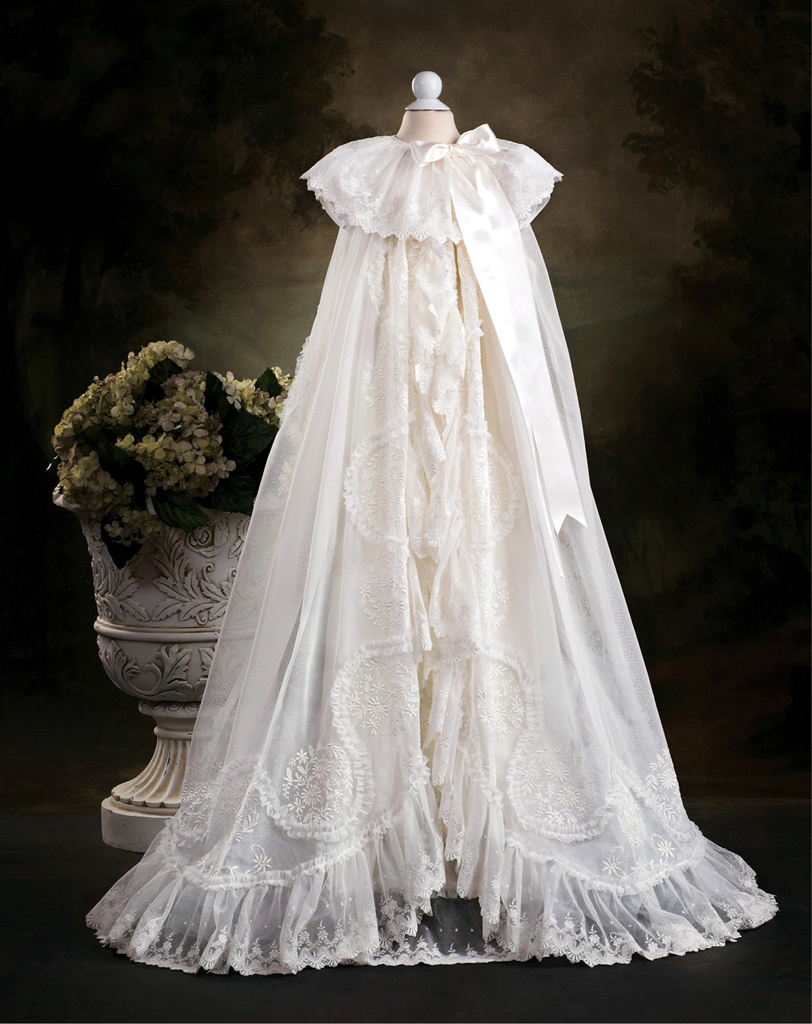
Royal Netting Christening Gown
CONSTRUCTED BY C ONNIE P ALMER , DIRECTIONS BY K ATHY B ARNARD
G ENERATIONS OF BRITISH ROYAL BABIES , from Princess Victoria in 1841 to Princess Eugenie in 1990, were christened in the elaborate royal gown of Spitalfield silk satin and Honiton lace commissioned by Queen Victoria. Having finally deteriorated beyond a wearable state, the gown was retired five years ago and replaced by a replica commissioned by Queen Elizabeth. Although photographs of the exquisite gown exist, the details arent readily apparent. What can be discerned is the magnificent pleated ribbon design on the skirt that serpentines around circular embroidery motifs. We made that the focus of our Royal Netting Christening Gown, choosing a Zundt motif you can purchase as a download. Instead of pleating yards of ribbon, which would have weighed heavily on the diaphanous netting, Connie Palmer used a ruched netting technique to achieve a similar effect. Both the overdress and the slip are edged in a gathered 7" (18 cm) wide netting lace, which also serves as the exquisite portrait collar. True to the original, we added the finishing touch of silk satin sashing tied in an off-center bow at the neckline.
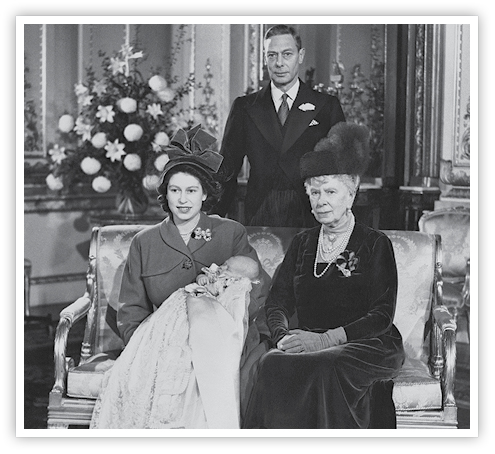
December 15, 1948, at Buckingham Palace, London, Princess Elizabeth holds the month-old royal prince. Seated to the left is Queen Mary, the infants great-grandmother. Standing in the rear is the prince's grandfather, King George VI. The child was christened Prince Charles Philip Arthur George of Edinburgh. (AP Photo)
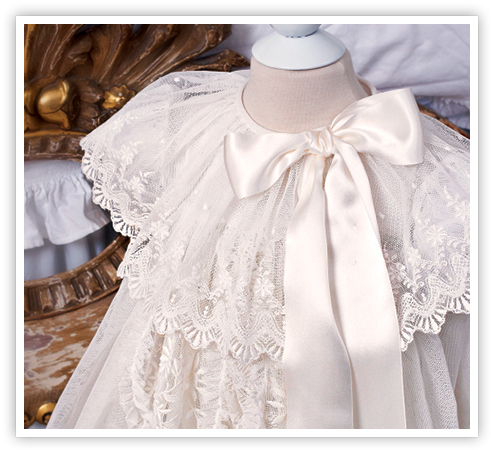
What Youll Need
P ATTERN
(included in the downloadable pattern files, available here)
Royal Netting Christening Gown (sizes 6 to 9 mos.)
Overdress
Front high yoke
Back high yoke
Puffed sleeve
Front over dress curve template
Underarm curve template
Overdress front and back skirts (no pattern required)
Slip Pattern
Front bodice
Back bodice
Slip front and back skirts (no pattern required)
F ABRIC
(layout guide included in the downloadable pattern files)
5 yd (4.6 m) of ivory heirloom cotton netting for the overdress (15 percent shrinkage is calculated in the yardage requirement)
2 yd (1.8 m) of ivory heirloom cotton netting for the netting ruffle strips
212 yd (214 m) of ivory satin batiste for the slip
12 yd (45.5 cm) of ivory silk organza for the yoke interlining
L ACE
14 yd (12.8 m) of 7" (18 cm) wide English netting lace from Capitol Imports for the overdress, collar and slip
34 yd (68.5 cm) of 1" (2.5 cm) wide lace edging for the slip and overdress plackets
N OTIONS
Three 38" (1 cm) mother-of-pearl buttons for slip back closure
Three 38" (1 cm) mother-of-pearl buttons for overdress closure (optional); may use beauty pins

